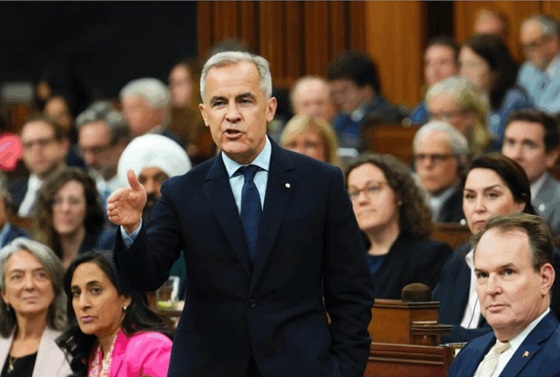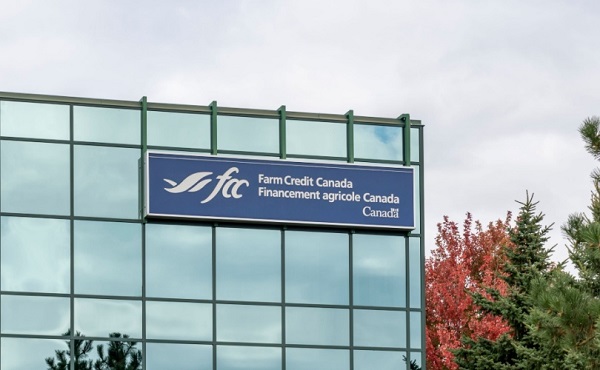Opinion
Canada’s Financial Freefall: When Rosy Rhetoric Meets Hard Reality
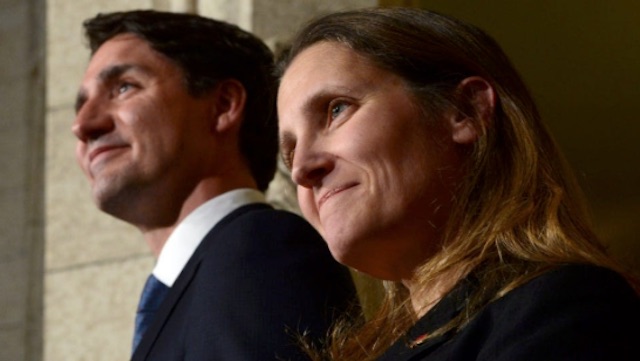
|
|
|
|
This article is from The Opposition With Dan Knight substack.
The Trudeau Government’s Economic Alchemy: Turning Gold Hopes Into Lead Numbers
Good morning, my fellow Canadians. It’s September 3, 2023, and if you’re expecting to wake up to a bright, financially secure Canada, well, I have some sobering news for you. The latest figures from Statistics Canada are in, and they confirm what many of us have suspected: the Canadian economy is not on the up-and-up. Despite the rosy pictures painted by Prime Minister Justin Trudeau and Finance Minster Chrystia Freeland, the real numbers don’t lie, and they point to an economic landscape in turmoil. Allow me to break it down for you.
The new Statistics Canada data is in, and it paints a rather bleak picture of the Canadian economy under the watchful eyes of the federal government and Justin Trudeau. Let’s delve into some numbers, shall we? A staggering $16.5 billion in debt was added by Canadian households in the first quarter of this year alone, with $11.2 billion being in mortgage debt. In an environment of 5% interest rates, a rate we haven’t seen for over a decade, this is a financial bomb waiting to explode.
And let’s not forget inflation. Since 2021, we’ve seen a cumulative inflation rate of around 16.5%. Now, remember, these aren’t just abstract numbers on a ledger somewhere; these are realities hitting your grocery bills, your gas prices, your rents, and slowly emptying your wallets. But it’s not just households feeling the pinch. The economy as a whole is stalling, with real GDP nearly unchanged in the second quarter of 2023, following a measly 0.6% rise in the first quarter.
Amidst all this, Justin Trudeau and the federal government seem content piling on debt like there’s no tomorrow. The Parliamentary Budget Officer’s March 2023 report shows Canada’s deficit is expected to rise to $43.1 billion in 2023-24, up from $36.5 billion in 2022-23. And let’s not forget that 1 out of every 5 dollars in this debt spree didn’t even exist pre-pandemic. Essentially, we’re spending money we don’t have, to solve problems we’re not solving, all while making new ones.
So, where has all this spending gone? Not into securing a robust future for Canadians, I can tell you that. Despite the monumental deficits and the reckless spending, housing investment fell 2.1% in the second quarter,marking its fifth consecutive quarterly decrease. Canadians are struggling to make ends meet, and the government’s financial imprudence is exacerbating, not alleviating, the situation.
But here’s a twist to the story: while investments in housing decline, Justin Trudeau decided it was prime time to open the floodgates of immigration. There’s an aspect of governance called planning, something that seems foreign to this administration. How does one justify allowing over a million immigrants into Canada without even hinting at a solution for housing them? The result is basic economics – demand outstrips supply, and prices soar.
Remember the days before Trudeau’s reign, when the average home in Canada cost around $400,000? Eight years under his watch and that figure has doubled. Trudeau’s policies seem like a cruel jest to young families, professionals, and, frankly, anyone aspiring to own a piece of the Canadian dream. It’s almost as if he expected the housing market to “balance itself”.
And before you think this is just a ‘rough patch,’ let me remind you that household spending is also slowing. So not only are Canadians going into debt, but they’re also cutting back on spending. They’re being hit from both sides, and there’s no end in sight. The government’s promises of prosperity seem increasingly hollow when we see that per capita household spending has declined in three of the last four quarters.
The Trudeau administration’s approach to governing appears to be in a parallel universe, one where debt is limitless, and financial responsibilities are for the next government or even the next generation to sort out. And don’t even get me started on the higher taxes lurking around the corner to pay off this bonanza of spending. This isn’t governance; it’s financial negligence.
When Canadians were told that this level of inflationary spending could turn our country into something akin to Venezuela, many scoffed at the idea. But let’s face it: the signs are becoming hard to ignore. The truth is, many Canadians have been led to believe they can have gold-plated social services without paying an ounce of gold in taxes. Prime Minister Justin Trudeau seemed more than happy to sell that narrative. He promised a utopia, a social safety net woven from dreams and aspirations. But what has that net caught? Rising costs, crippling debt, and a harder life for everyday Canadians.
Trudeau has turned out to be less a responsible steward of the economy and more of a Pied Piper, leading us all off a fiscal cliff while playing a cheerful tune. Or perhaps he’s more like the Cheshire Cat from “Alice in Wonderland,” grinning broadly as he disappears, leaving behind only his grin and a trail of false promises.
As we approach the pivotal year of 2025, don’t forget who sold you this bill of goods. Remember the skyrocketing costs of living, the unmanageable debt, and the empty words that were supposed to make everything better. I, for one, certainly won’t forget. And I suspect, come election time, neither will you.
Click here to see more from The Opposition with Dan Knight.
For the full experience, upgrade your subscription.
Aristotle Foundation
We’re all “settlers”

By Mark Milke and Tom Flanagan
The settler-indigenous distinction is false. We all originated in Africa.
If Canadians care to understand why our country is increasingly fractured, one key driver is the notion that non-Indigenous Canadians — “settlers” as they are called — should be grateful to live anywhere in the Americas.
The “settler” label is mostly directed at those of British and European ancestry. But it can apply to anyone whose families arrived from anywhere — Africa, Asia, the Levant, the Pacific — who were not part of the prior waves of migration to the Americas.
According to the most recent scientific knowledge, human settlement in the Americas began about 15,000 to 20,000 years ago. These pioneers of settlement must have arrived from Asia by boat and hopscotched along the Pacific coast because the interior land was glaciated. They migrated as far south as modern-day Chile, but it is unknown how far inland they penetrated and whether they survived to merge with later migratory settlers.
Another wave of migration started around 13,000 years ago when an ice-free corridor opened through Alberta between the two great glaciers covering North America. This made it possible for people from the now submerged land of Beringia to move south through Alaska, Yukon and Alberta across North America.
Later, but at an unknown date, came the movement of the Dene-speaking peoples now living mostly in Alaska and Canada’s North (though the Tsuut’ina got to southern Alberta and the Navajo to the southwestern United States). Their languages still show traces of their relatively recent Siberian origins.
The Inuit migrated from Siberia across the Arctic to Greenland around AD 1000. Another group inhabited the Arctic starting around 2500 BC, but their relationship to the Inuit is uncertain.
In short, the Americas were settled in waves from Asia. Everyone alive today is descended from settlers. The latest “Indigenous” settlers arrived barely ahead of the first European settlers, the Vikings, who settled in Greenland and Newfoundland, and of Christopher Columbus, who started Spanish settlement in the Caribbean.
Singling out Europeans as “settlers” drives land acknowledgments, as well as demands for compensation and reconciliation. It plays on guilt about the actions of actors long since dead, while the concurrent demands for land, decision-making power and financial settlements occur on an open-ended basis. Internationally, the United Nations Declaration on the Rights of Indigenous Peoples (UNDRIP) also assumes the Indigenous vs. settler-colonial divide is valid.
Why does this matter? Because peaceful, relatively prosperous nation-states are not guaranteed to last. In fact, they’re the exception, not the rule. To make actual progress in unifying Canada as opposed to watching it break down and fragment into hundreds of inconsequential principalities (a separate Quebec, a separate Alberta, and multiple First Nations with state-like powers, of which there would be up to 200 in British Columbia alone), it is overdue to dissect these assumptions, and the related belief that Canadians have done little to make up for some of the wrongs done in history.
Language clarifications
Let’s begin with language.
The notion that some groups in the Americas have been here since “time immemorial” and thus are indigenous in the truest sense of that term is evolutionarily and historically false. The evolutionary origin of every human being lies in Africa, where Homo sapiens evolved as a distinct species about 315,000 years ago. Also, as Encyclopædia Britannica notes, “we were preceded for millions of years by other hominins, such as Ardipithecus, Australopithecus, and other species of Homo.”
The fact that all of us jointly link back to origins in Africa should be enough to stop using the “time immemorial” phrase, as well as any artificial distinction between those considered “Indigenous,” whose ancestors arrived in separate waves of migration separated by thousands of years, and those considered “settlers,” whose ancestors arrived during the last 500 years.
That some people’s ancestors beat others by 19,500 years or less to what we now call Canada does not create a permanent obligation on the part of later arrivals, or their progeny, to those whose families arrived first, just as Indigenous people today are not responsible for the actions of their own ancestors against other tribes over thousands of years. In the grand scheme of evolutionary time, all our ancestors’ lives were but a relative blip.
The ‘stolen land’ assertion
A stronger argument might be that later settlers owe the families of earlier settlers for stealing their land, which is a popular claim. However, that assertion ignores the multitude of treaties signed across Canada as well as the very approach by the colonial British and Sir John A. Macdonald that treaties were preferable to brazen conquest, as happened with other empires throughout history, including those now labelled Indigenous.
Further, that not every inch of Canada is covered by treaty still does not negate how the Canadian nation-state provided funds even to those First Nations not covered by treaty — in British Columbia, for example. Or how the 1982 constitutional amendments recognized Aboriginal and treaty rights, which are being constantly expanded by Canadian courts.
Moreover, the first Europeans and later British did not come to the Americas and “steal” a $2.5 trillion economy (Canada’s GDP in 2025). Rather, the earlier inhabitants were followed by French fur traders, Scottish explorers, Western farmers, Toronto financiers, Atlantic and Pacific fishermen, British and Asian workers, entrepreneurs in the 19th and 20th centuries and many other arrivals. All of them built Canada up. They did so with their own sweat, time and investment. That’s why farms feed Canadian families, mines provide steel for automobiles, natural gas and hydroelectricity heat homes, and skyscrapers can be built on First Nations reserves — because all “settlers” together made modern-day Canada possible.
Reconciliation considerations: Money flows and tax exemptions
Whenever reconciliation conversations begin, they inevitably assume “stolen” land as per above and ignore the significant past and present cash transfers as well as generous tax exemptions — many of which are not constitutionally required but exist as a result of the Indian Act, and thus could have been eliminated at any point in our collective history but were not.
Let’s follow the money. In 2013, one of us (Milke) authored the first comprehensive Fraser Institute report on the money spent in just the postwar world until 2012, at the federal and provincial levels, on Indigenous Canadians, including those once called “treaty Indians” but also others.
The results? In 2013 dollars (i.e., adjusted for inflation), in what was then known as the Department of Indian Affairs, spending on Canada’s Aboriginal peoples rose to almost $7.9 billion by 2011-12 from $79 million annually in 1946-47. That was an increase from $922 per Indigenous person per year to $9,056 — a rise of 882 per cent. By comparison, total federal program spending per person on all Canadians in the same years rose by 387 per cent. Of course, Indigenous Canadians are also eligible for and receive other government spending because they are Canadians.
Another one of us (Flanagan), updated that report and published several of his own for the Fraser Institute, which echoed the findings of the 2013 report on Aboriginal spending: ever-higher budgetary spending, plus eye-popping recent settlements of lawsuits. The largest of these was a $40 billion settlement in 2022 for children taken from reserves into foster care.
Spending on Indigenous programs and services in the 2024-25 budget was $32 billion, nearly triple what it was 10 years ago, even as outcomes have not measurably improved. Multiple multi-billion-dollar financial settlements also continue to be awarded every year, on top of the program and services funding itemized in the budget.
In addition to the child welfare settlement noted above, ponder a $10 billion settlement in 2023 related to the Robinson Huron Treaty (including individual payments of at least $110,000 per person), and an $8.5 billion agreement in 2025 to reform First Nations child and family services in Ontario, among others.
Much of the above spending on Indigenous peoples goes beyond traditional treaty and constitutional requirements. There is also much more to come. In the federal departments of Crown-Indigenous Relations and Northern Affairs Canada, beyond “routine” spending on Indigenous Canadians, several transfer programs explicitly provide funds to Indigenous Canadians and/or to support further claims upon the public purse.
That’s the spending side. Now the tax exemptions. In 2024, Flanagan published a report for the Aristotle Foundation on tax exemptions given to First Nations under Section 87 of the Indian Act. That’s the longstanding tax exemption for real and personal property owned by “Indians,” including employment income, on reserves. One incomplete estimate from 2015 quantified the value of those exemptions at roughly $1.3 billion a year.
At some point — we suggest now — all this should count towards the “paid” column in the reconciliation ledger.
The mistaken morality play
Financial matters aside, what drives one-sided reconciliation talk in Canada is not only the mistaken claim that those now labelled “Indigenous” have existed in the Americas from “time immemorial,” a creationist myth, but that pre-contact, First Nations were unlike all other human beings in history — peaceful with each other, and at one with the environment.
This image is ludicrously far from historical fact. Amerindians were environmentalists only because their small numbers limited the environmental damage they caused. And warfare was endemic among them. At the time of the American Revolution, the Iroquois were waging war to create an empire in Ontario and the American Midwest. The Ojibwe and Cree, originally woodland peoples, blasted their way onto the prairies after they got guns from the Hudson’s Bay Company. As late as 1870, the Cree and Blackfoot, both weakened by smallpox, fought a lethal battle near the site of modern Lethbridge, which is still remembered in tribal lore.
As the Romans said, Vae victis (“woe to the conquered.”) If the losers in intra-Indigenous wars did not die in battle, they were often tortured to death or enslaved. Slavery was practiced on a particularly large scale on the Pacific coast, where slaves could be put to work cutting wood. Indigenous slavery persisted in British Columbia even after that province joined Confederation and still has echoes today. And in other parts of the Americas, pre-contact, human sacrifice was practiced. It was of course colonialists — the British in Canada as only one example — who ended such practices.
How Indigenous identity politics imitate … Europe
Chopping up Canada into ever-more tribal enclaves is historically reminiscent of the continent often vilified in modern-day discourse: Europe. Both before the Roman Empire and after its collapse into the medieval age and until at least 1945 in various forms, the innate tribalism of Europe has long been costly in blood and treasure.
Mid-20th century historian Will Durant described the after-effects of the collapse of that empire and how Europe retreated into today what we could call “balkanization”: “half-isolated economic units in the countryside,” “state revenues declined as commerce contracted and industry fell,” and “impoverished governments could no longer provide protection for life, property, and trade.”
Of course, most people in human history have endured what the philosopher Thomas Hobbes described as nasty, brutish and short lives precisely because human beings have, for much of our history, found reasons to divide from each other. They did so most often for less-than-ideal reasons and with even less ideal results. But unlike those under most empires (at one end of possible political organization) or tribes (at the other), what mostly began as a British colonial experiment and is now modern-day Canada increasingly gave rights and prosperity to a diverse set of peoples — all of us “settlers.”
Of those who wish to turn Canada into a thousand mini-fiefdoms, we ask the same question Pierre Trudeau asked during a speech to a Montreal crowd during the 1980 referendum on separation. After describing Canada’s virtues and also the interdependent world we live in, Trudeau challenged the separatist-isolationists this way: “These people in Quebec and in Canada want to split it up? They want to take it away from their children? They want to break it down? No! — that’s our answer!” to which the crowd roared their approval.
What about one Canada for all?
The mostly peaceful northern country of Canada was not an accident but a conscious creation, mostly of the British, after their win on the Plains of Abraham in 1759 (with Indigenous allies, it should be noted). That led to the eventual victory of the British in 1763 and Canada’s eventual creation as a nation-state in 1867. Its success over centuries, pre- and post-Confederation, but especially in the postwar world, is also due to 19th-century British presumptions which fully flowered in the last century. That included expanded freedoms for all, including in 1960 when Indigenous Canadians were rightfully restored the right to vote.
Canada’s accomplishments include individual rights, including equality before the law and in policy (with the noted exception of reverse discrimination and DEI); legal protection of property rights (albeit not constitutionalized), a mostly open, free economy; the rule of law and independent courts; and democratic rule, among other achievements rare in human history.
There are thus two questions every Canadian today should ask.
First, was the arrival of later settlers, be they French or British in the 16th and 17th centuries and beyond, and later arrivals from Africa and Asia, mostly a positive development? We would argue that the answer is “yes” for all the above-noted reasons: Increasing freedoms for all over time, more prosperity, and peace on the northern half of the North American continent.
Second, the most fundamentally important question we can ask of each other in 2025 is not “When did your ancestors arrive here?” but “What kind of Canada do we want in the future?” Little good and much harm will come from destroying our inheritance, including private property, or ramping up identity politics which comes at the expense of equality of the individual, or continuing down the path of balkanization.
The better future for Canada is one where all are treated as equal in law and policy as much as practically possible. It is one where property rights are secure and the economy thrives, and where the “fusion” of peoples from all over the world continues what the first settlers began 20,000 years ago: A near-miraculous project where Canada is renewed to be a free, flourishing country where all are welcome.
Mark Milke is the president of the Aristotle Foundation for Public Policy. Tom Flanagan is a senior fellow at the Aristotle Foundation. Photo credit: iStock.
Business
US Supreme Court may end ‘emergency’ tariffs, but that won’t stop the President

From the Fraser Institute
By Scott Lincicome
The U.S. Supreme Court will soon decide the fate of the global tariffs President Donald J. Trump has imposed under the International Emergency Powers Act (IEEPA). A court decision invalidating the tariffs is widely expected—hovering around 75 per cent on various betting markets—and would be welcome news for American importers, the United States economy and the rule of law. Even without IEEPA, however, other U.S. laws all but ensure that much higher tariffs will remain the norm. Realizing that protection will just take a little longer and, perhaps, be a little more predictable.
As my Cato Institute colleague Clark Packard and I wrote last year, the Constitution grants Congress the power to impose tariffs, but the legislative branch during the 20th century delegated much of that authority to the president under the assumption that he would be the least likely to abuse it. Thus, U.S. trade law is today littered with provisions granting the president broad powers to impose tariffs for various reasons. No IEEPA needed.
This includes laws that Trump has already invoked. Today, for example, we have “Section 301” tariffs of up to 25 per cent on around half of all Chinese imports, due to alleged “unfair trade” practices by Beijing. We also have global “Section 232” tariffs of up to 50 per cent on imports of steel and aluminum, automotive goods, heavy-duty trucks, copper and wood products—each imposed on the grounds that these goods threaten U.S. national security. The Trump administration also has created a process whereby “derivative” products made from goods subject to Section 232 tariffs will be covered by those same tariffs. Several other Section 232 investigations—on semiconductors, pharmaceuticals, critical minerals, commercial aircraft, and more—were also initiated earlier this year, setting the stage for more U.S. tariffs in the weeks ahead.
Trump administration officials admit that they’ve been studying these and other laws as fallback options if the Supreme Court invalidates the IEEPA tariffs. Their toolkit reportedly includes completing the actions above, initiating new investigations under Section 301 (targeting specific countries) and Section 232 (targeting certain products), and imposing tariffs under other laws that have not yet been invoked. Most notably, there’s strong administration interest in Section 122 of the Trade Act of 1974, which empowers the president to address “large and serious” balance-of-payments deficits via global tariffs of up to 15 per cent for no more than 150 days (after which Congress must act to continue the tariffs). The administration might also consider Section 338 of the Tariff Act of 1930—a short and ambiguous law that authorizes the president to impose tariffs of up to 50 per cent on imports from countries that have “discriminated” against U.S. commerce—but this is riskier because the law may have been superseded by Section 301.
We should expect the administration to move quickly to use these measures to reverse engineer Trump’s global tariff regime under IEEPA. The main difference would be in how he does so. IEEPA was essentially a tariff switch in the Oval Office that could be flipped on and off instantly, creating massive uncertainty for businesses, foreign governments and the U.S. economy. The alternative authorities, by contrast, all have substantive and procedural guardrails that limit their size and scope, or, at the very least, give American and foreign companies time to prepare for forthcoming tariffs (or lobby against them).
Section 301, for example, requires an investigation of a foreign country’s trade and economic policies—cases that typically take nine months and involve public hearings and formal findings. Section 232 requires an investigation into and a report on whether imports threaten national security—actions that also typically take months. Section 122 has fewer procedures, but its limited duration and 15 per cent cap make it far less dangerous than IEEPA, under which Trump has repeatedly threatened tariffs of 100 per cent or more.
Of course, “procedural guardrails” is a relative term for an administration that has already stretched Section 232’s “national security” rationale to cover bathroom vanities. The courts also have largely rubber-stamped the administration’s previous moves under Section 232 and Section 301—a big reason why we should expect the Trump administration’s tariff “Plan B” to feature them.
Thus, a court ruling against the IEEPA tariffs would be an important victory for constitutional governance and would eliminate the most destabilizing element of Trump’s tariff regime. But until the U.S. Congress reclaims some of its constitutional authority over U.S. trade policy, high and costly tariffs will remain.
-
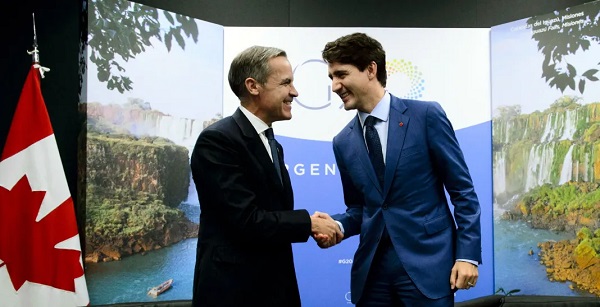
 Carbon Tax2 days ago
Carbon Tax2 days agoCarney fails to undo Trudeau’s devastating energy policies
-

 Health1 day ago
Health1 day agoNEW STUDY: Infant Vaccine “Intensity” Strongly Predicts Autism Rates Worldwide
-

 Business2 days ago
Business2 days agoThe UN Pushing Carbon Taxes, Punishing Prosperity, And Promoting Poverty
-
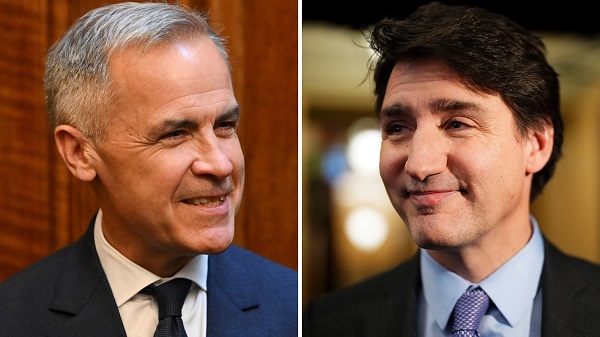
 Business1 day ago
Business1 day agoClimate Climbdown: Sacrificing the Canadian Economy for Net-Zero Goals Others Are Abandoning
-

 Great Reset2 days ago
Great Reset2 days agoCanadian government forcing doctors to promote euthanasia to patients: report
-

 Alberta1 day ago
Alberta1 day agoAlberta to protect three pro-family laws by invoking notwithstanding clause
-

 Artificial Intelligence1 day ago
Artificial Intelligence1 day agoLawsuit Claims Google Secretly Used Gemini AI to Scan Private Gmail and Chat Data
-

 Health22 hours ago
Health22 hours agoCDC’s Autism Reversal: Inside the Collapse of a 25‑Year Public Health Narrative




